

I am pretty new the subject of bracing, but from the standpoint of the unibody construction, twisting loads can be greatly reduced by adding chassis bracing. Bracing keeps the chassis "square" and allows the suspension to work better. The chassis will deflect less allowing for more predictable handling at or near the limit.
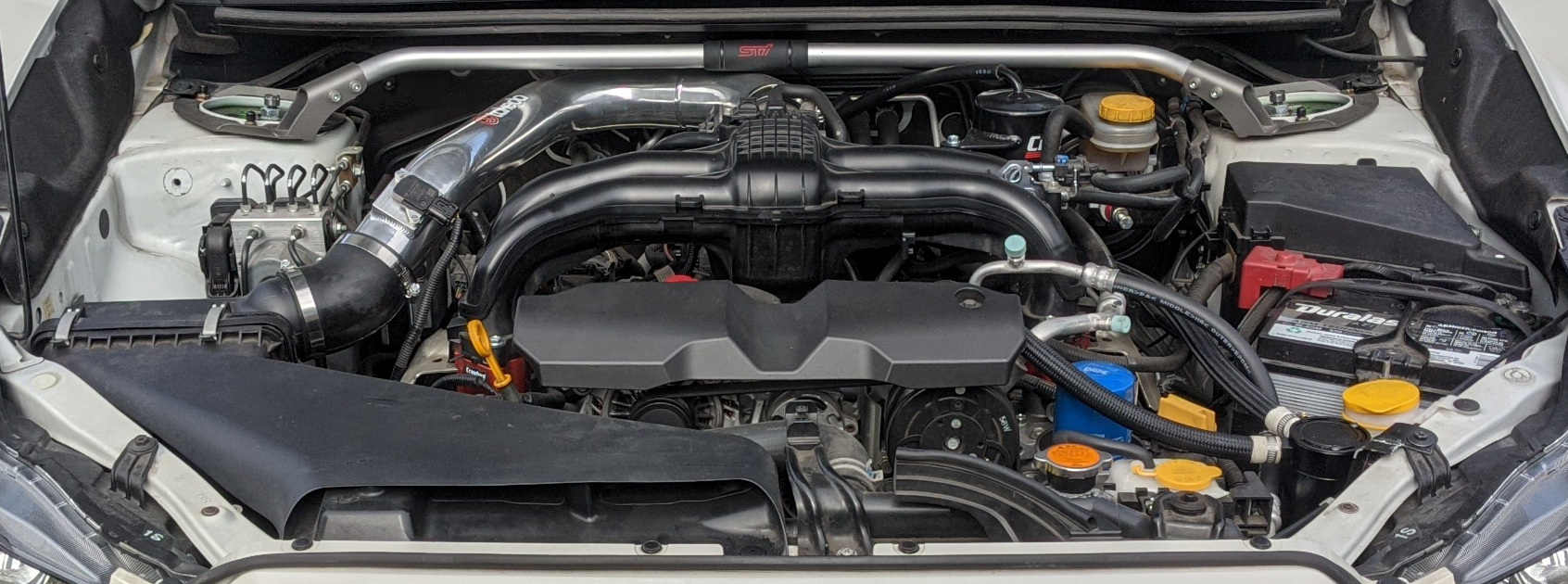
Strut bars (for short) work in conjunction with the suspension. These typically tie both strut tops together to reduce chassis flex under hard cornering.
I opted for the STI flexible front strut tower bar offering which promises ride comfort while still maintaining chassis stiffness. In my experience only under extreme cornering does the front strut bar have any effect as the firewall typically provides frontal rigidity. I think a solid bar would be more noticeable.
Rear bars are also used, however their installation often reduces trunk utilization because they block a section of the flat floor.

Most recently I found a 3-point rear strut tower bar that does not take up any of the existing trunk space. It came to me from Russia and hides neatly under everything. The rear strut bar is a very good upgrade, even more so if you have a hatchback (the rear of the unibody is quite hollow and allows for much flex). The bonus feature is that it has 3 tie points rather than 2. This adds an extra tie point to maintain chassis rigidity. The 3-point strut brace in the rear really stiffens up the unibody to the point that the rear sway bar starts working better. Recommended.
Suspension support brackets (as Subaru calls it) help reinforce the front lower control arm area. The original piece are stamped steel. The TB Performance part makes use of strong tubular steel.

In addition to the parts mentioned above, there are a number of handling tuning parts available from Subaru (STI) and other manufacturers. Here are a few.

The draw stiffener at its core is a spring loaded tie rod, drawing together two parts of the under chassis, mainly the transmission and one of the control front arms. It can extend from 0-14mm. It is installed with 2mm of preload tension.
It is recommended that this part be used in conjunction with the STI Flexible strut tower bar. Without these two parts, you can't really quantify the amount of chassis flex for this road going passenger economy car. The car in stock form is just sort of soft without really noticing it. However after install there is a noticeable harmonic spring-like change of the chassis when driving over irregular road. Cornering spiritedly provides a sort of 'energized" feedback.

Better steering feedback can be had with a simple inexpensive part known as the steering damper lock-down. The OEM steering knuckle contains a rubber bushing which allows for reduced vibration through the steering wheel. However, because it is made from rubber, it leaves some play in the steering which can be felt as vagueness when cornering. The steering damper lock-down is a 2 piece clamp which reduces the steering slop. You can find them made by Perrin, or Torque Solutions. It is a simple, easy-to-install, effective way to get better steering feedback.

With much of the chassis' weight supported by the rear subframe. it is understandable as a passenger car the ride should be compliant. The chassis rides on a set of 4 rear subframe bushings that flex under acceleration, braking and cornering. Over time, these OEM rubber subframe bushings can deteriorate. The rubber bushings also contain large gaps to can cause the chassis to shift a fair amount (a few centimeters) in any direction.
This is quite a disadvantage to the performance oriented driver and causes some unpredictability. In order to correct this, subframe bushing inserts can be used to tighten up the connection between chassis and subframe. Not only does this help reduce chassis on subframe movements, but also guarantees the rear drivetrain to engage much more directly. The effect is more torque delivered to the rear wheels. Recommended.
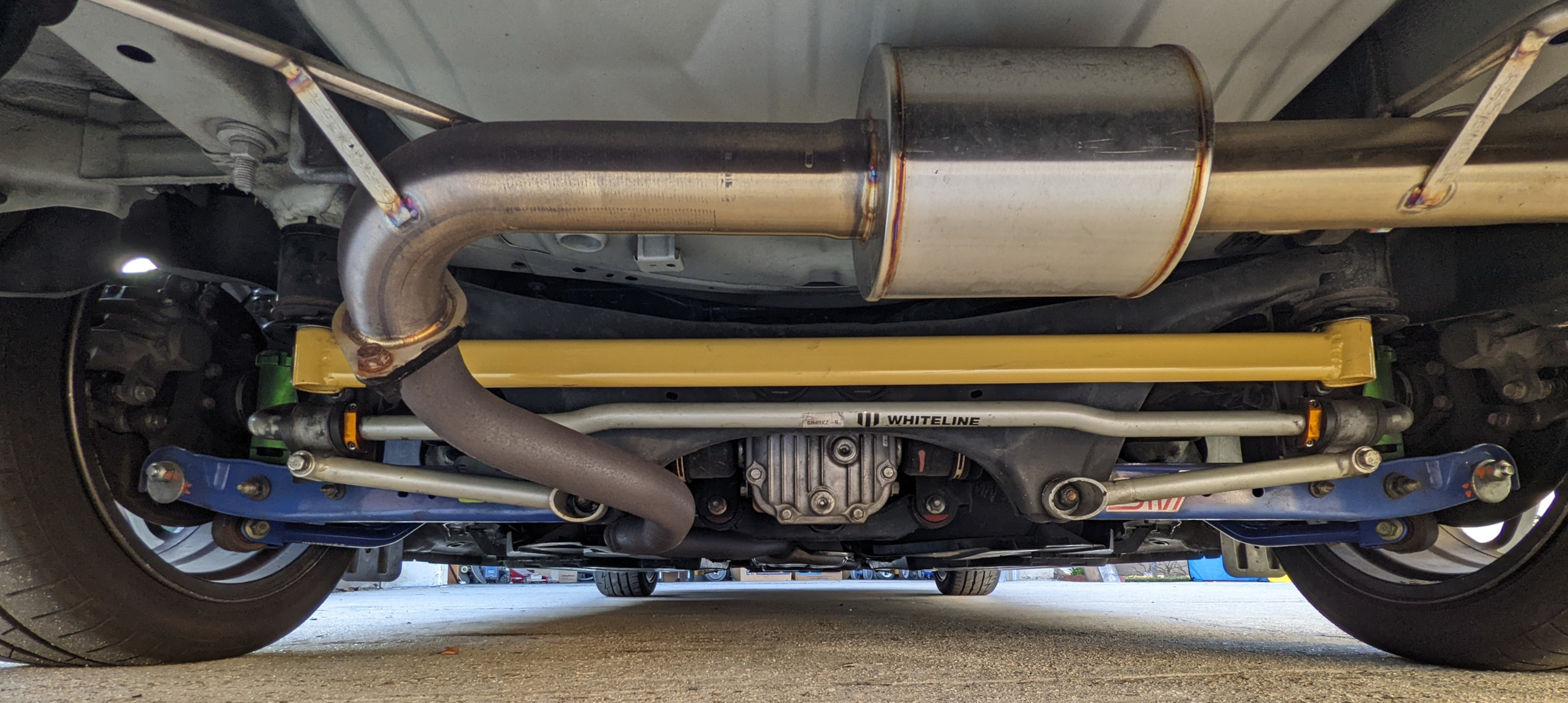
In conjunction with the rear subframe bushing inserts is the rear subframe brace, pictured here in gold running between the two rear subframe bolts. The sole effect of this brace is to reduce lateral (side-to-side) motion of the chassis on the subframe. This is achieved by "tying" the two rear subframe bolts together. The reduction of the rear end snapping back after a hard corner is significantly reduced with this brace and thus highly recommended for slalom, autocross, canyon driving, or general spirted driving which involves accurate cornering.
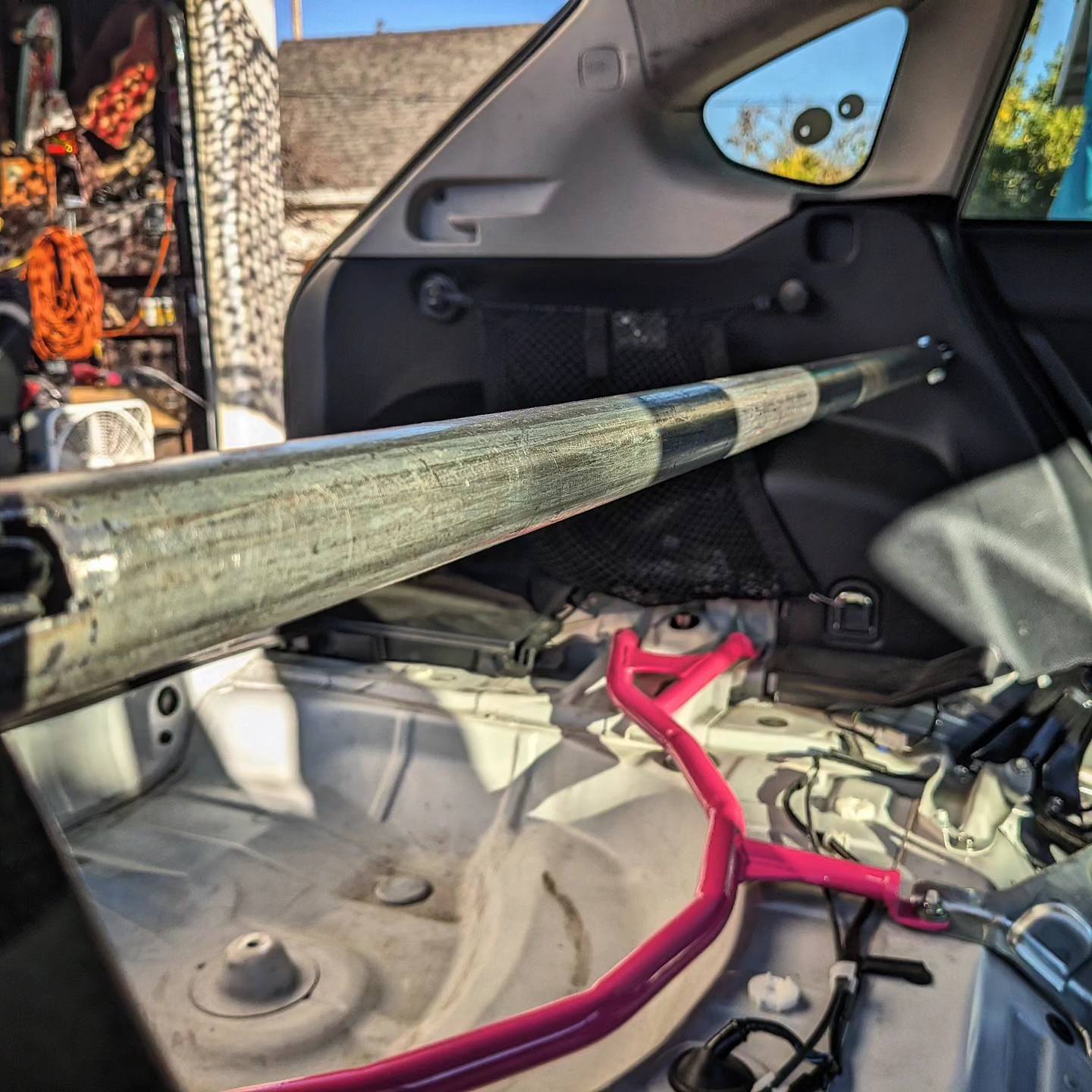
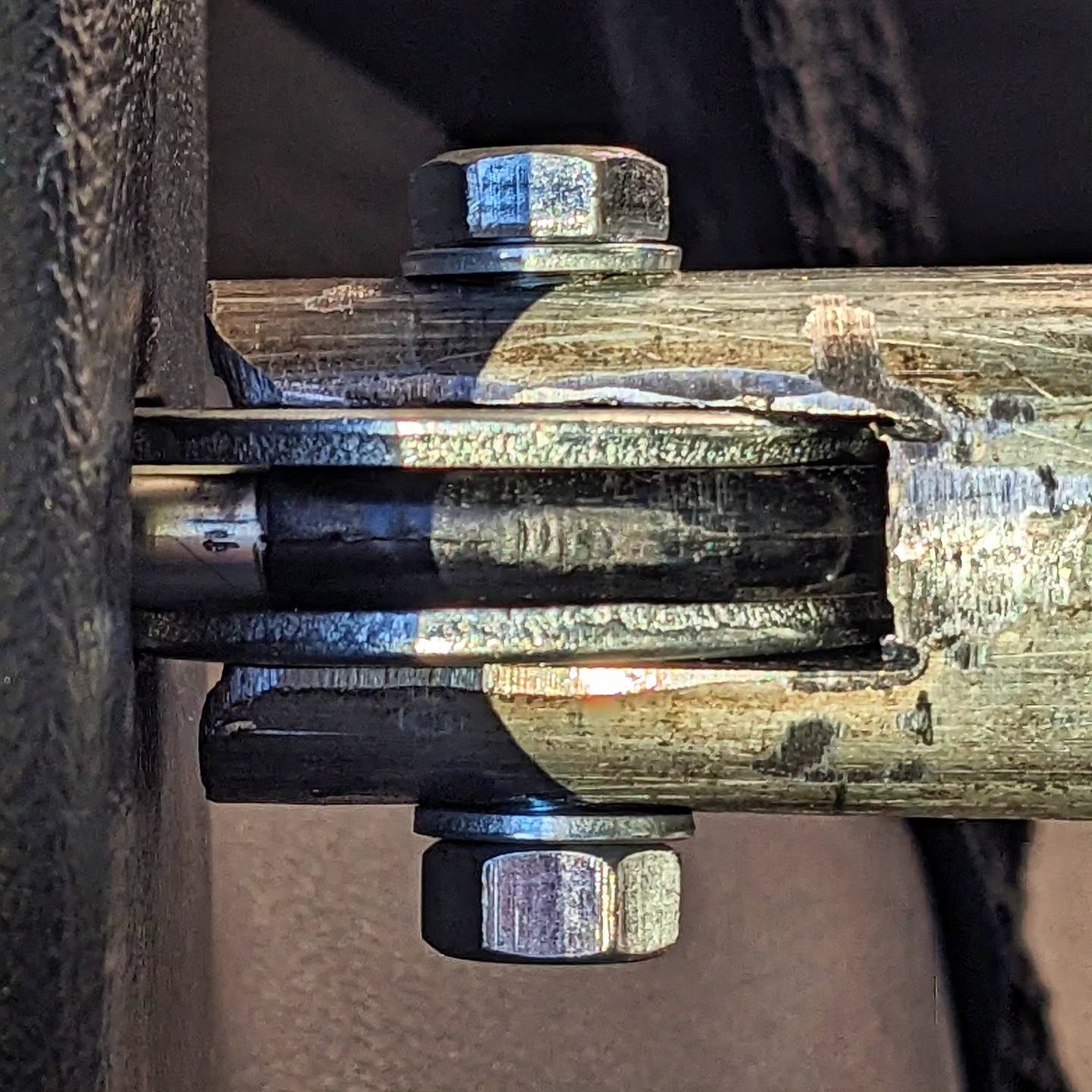
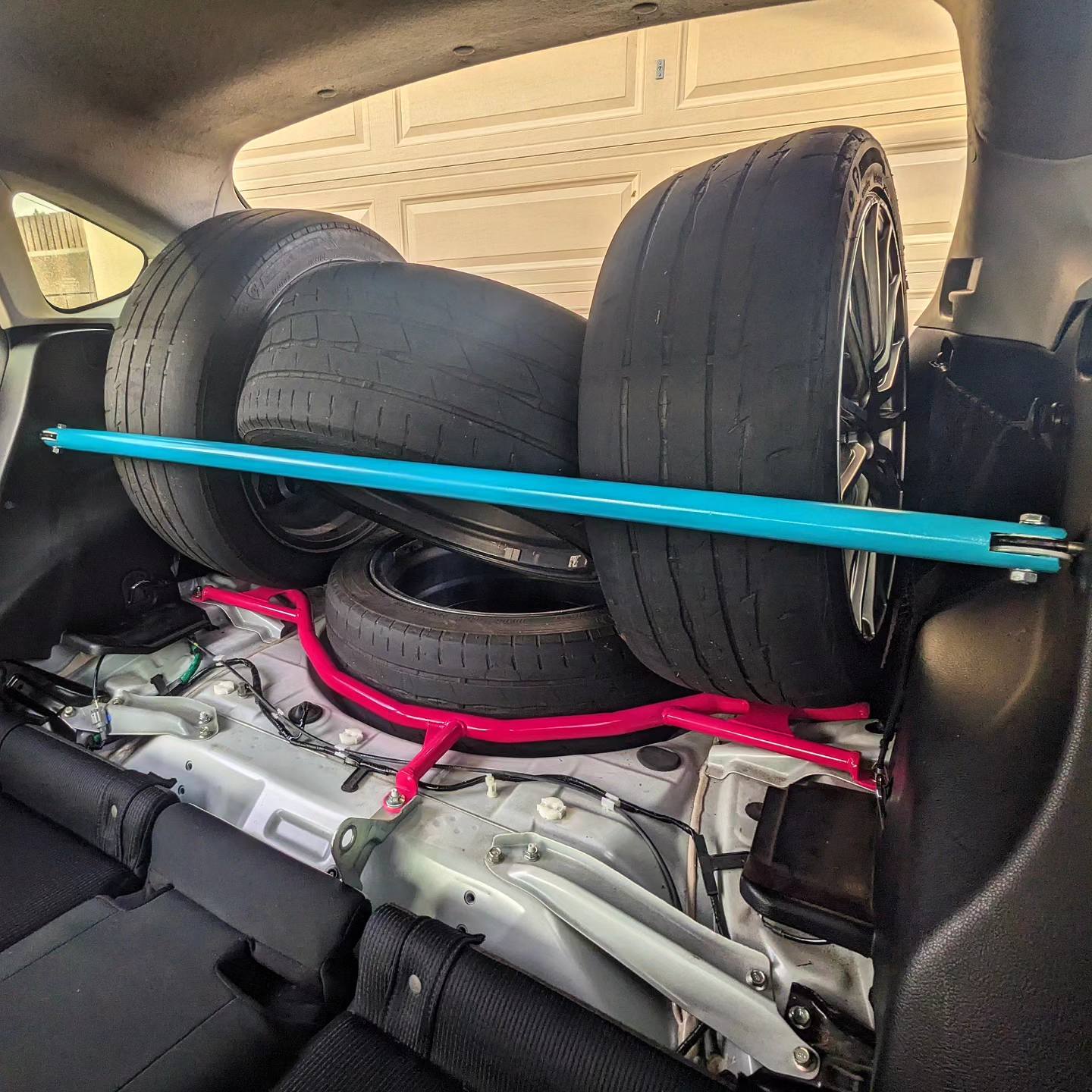
If raw street car bracing appeals to you, fabricating a simple DIY rear seatback brace can help stiffen the unibody. At a cost of ~$10USD, I was able to craft a functional brace which can double as a trunk divider. At this point, the car with rear seats removed can significant help save weight. That being said, maybe keep the tires out of the boot if you're going to be tearing up some backroads :)
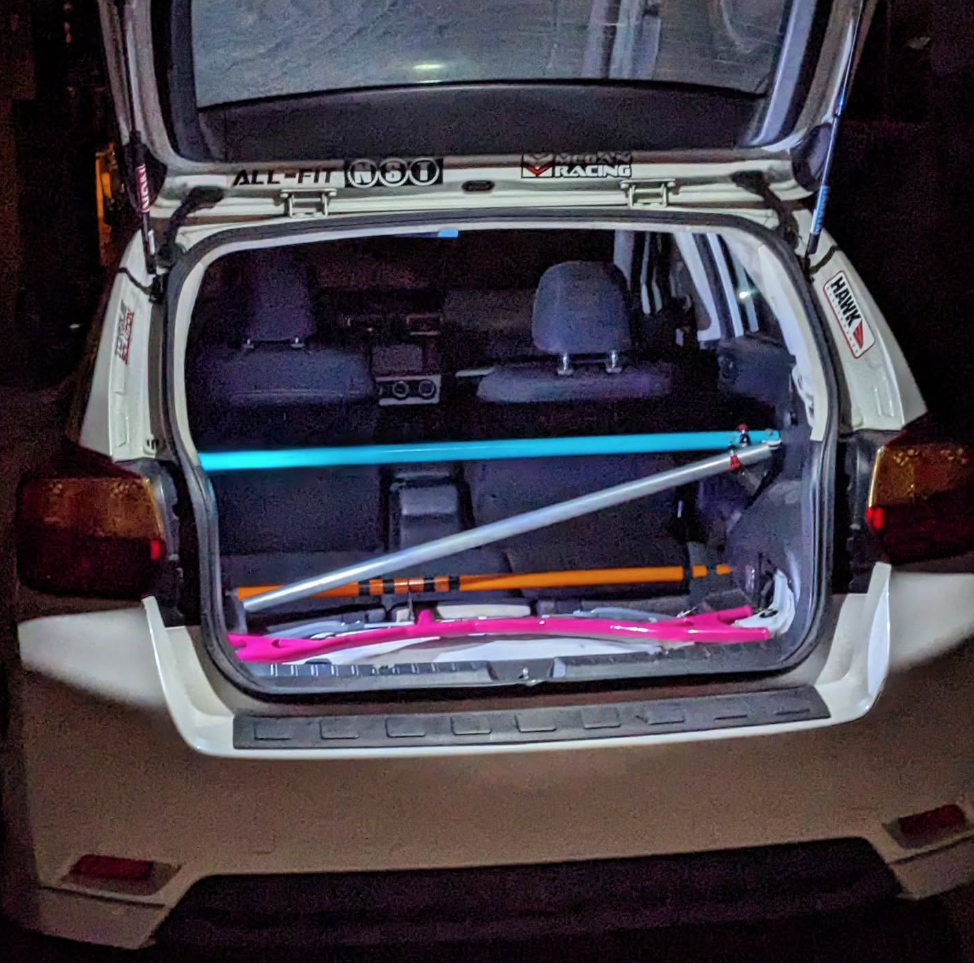
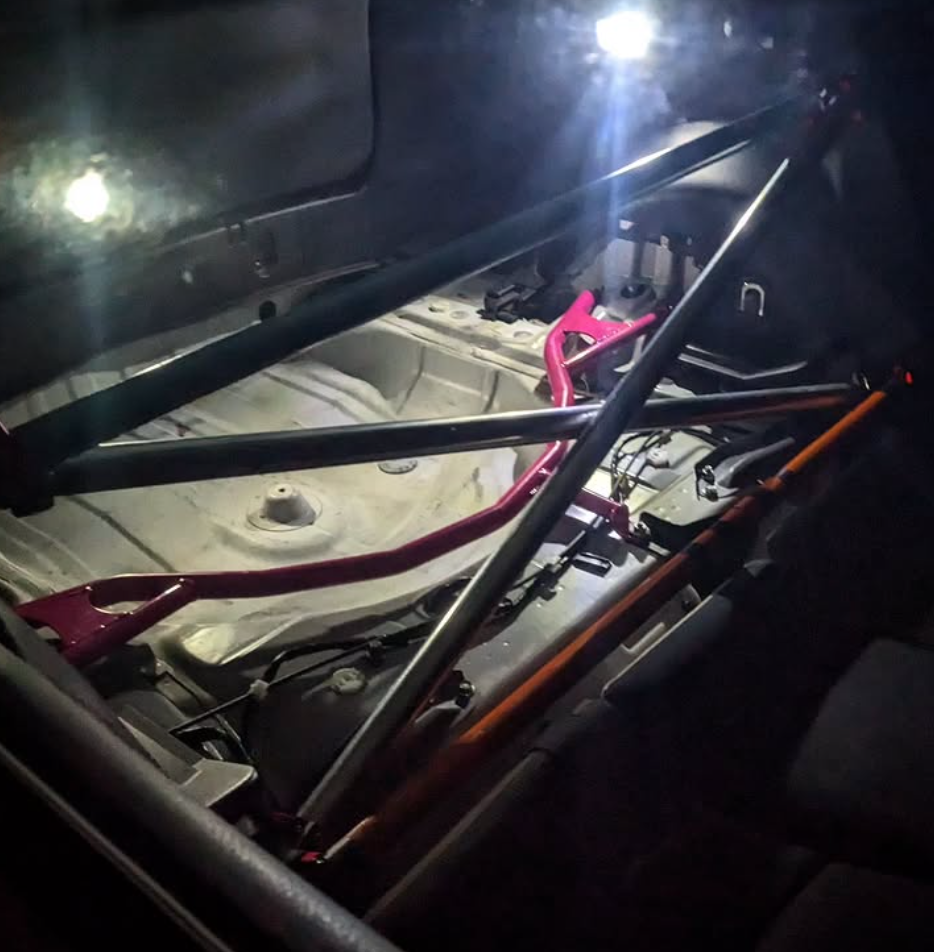
The addition of cross bracing addresses the main concern with rear end torsional rigidity. While it does not serve any safety purpose, like a roll cage would, it does offer a light weight and removable option for tightening up the rear end of the hollow hatchback chassis.
While aftermarket bracing is not necessarily needed in most modern cars for their intented passenger car purposes, the tuner may find it worthwhile to strengthen or stiffen certain areas of the car to increase suspension feedback. Typically tying two or more points in a chassis or subframe will increase its stiffness. The general idea is to add torsional (twisting) stiffness.
Back to Subaru Impreza Tuner